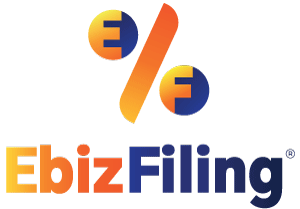
-
May 3, 2023
What is the difference between trademark withdrawal and abandonment?
Introduction
Trademarks are an essential part of any business, as they help to identify a brand and its products or services. However, there may be times when a trademark owner needs to either withdraw their trademark or trademark abandonment. In this blog, we will discuss the difference between trademark withdrawal and abandonment.
What is trademark withdrawal?
It occurs when a trademark owner voluntarily withdraws their application or registered trademark. This can happen at any stage of the application or registration process, and the owner may decide to withdraw the trademark for various reasons, such as a change in business strategy, a dispute with a third party, or a decision to rebrand.
When a trademark owner decides to withdraw their trademark, they must inform the same in writing to the relevant Trademark Office. The trademark office will then cancel the application or registration for the trademark, and the owner will lose all rights associated with the trademark.
What is trademark abandonment?
Trademark abandonment occurs when a trademark owner unintentionally or voluntarily stops using their trademark without any intention of using it again in the future. Trademark abandonment can happen for various reasons, such as a change in business direction or a lack of funds to continue using and maintaining the trademark.
When a trademark is abandoned, the owner loses all rights associated with the trademark, and it becomes available for use of other parties. However, the abandonment must be official and must meet some requirements, such as the non-use of the trademark for a specified period, which varies from country to country.
Difference between trademark withdrawal and abandonment
The difference between trademark withdrawal and abandonment is listed below in a tabular form:
|
|
Trademark Withdrawal |
Trademark Abandonment |
|
Definition |
A trademark owner voluntarily withdraws their application or trademark registration before it is granted by the trademark office. |
A trademark owner intentionally relinquishes their rights to the trademark without the intention of selling or transferring the mark. |
|
Who initiates the action? |
The trademark owner |
The trademark owner |
|
Timing |
Before or after the trademark is granted by the trademark office. |
After the trademark is granted by the trademark office. |
|
Legal implications |
No negative legal consequences. The owner can apply for the same trademark again in the future. |
Negative legal consequences. The owner cannot regain the abandoned trademark and loses all rights to it. |
|
Requirements |
No specific requirements. The owner can withdraw their application or registration at any time. |
The trademark owner must show clear intent to abandon the trademark through non-use, non-renewal, or failure to maintain the mark. |
|
Process |
The owner submits a formal request to the trademark office to withdraw their application or registration. |
The owner does not need to make any formal request but must show clear intent to abandon the trademark. |
|
Effect on third-party rights |
No effect on third-party rights. |
Third-party rights are affected, as the abandoned trademark becomes available for use and registration by others. |
|
Examples |
An applicant withdraws their trademark application because they discovered a similar mark already exists. |
A company stops using its trademark and does not renew its registration, indicating an intent to abandon the mark. |
Conclusion
In conclusion, while both trademark abandonment and withdrawal involve trademark owners relinquishing the right to hold the mark under their name, there are significant differences between the two concepts. A person withdraws their trademark before or after a trademark is granted by the trademark office and has no negative legal consequences, while trademark abandonment is after a trademark is granted and can result in the loss of all rights to the trademark.
Withdraw Your Trademark Application
Once the Trademark Application is filed, it can be withdrawn. Withdraw your Trademark application with Ebizfiling. Prices start from 2499/- only.
About Ebizfiling -










Reviews
Chandrashekhar Nimmalwar
28 Oct 2020(Translated by Google) Ebizfiling has a company providing support for time period service and proper guidance. It is my personal experience at present. Chandrashekhar Nimmalwar. Today Aas Family Foundation (Original) ईबिज फायलीग की सेवा समय अवधि कार्य प्रणाली एव उचित मार्गदर्शन के लिए सहायता प्रदान कम्पनी है।यह मेरा वर्तमान में नीजी अनुभव है। चन्द्रशेखर निममलवार। आज आस परिवार फाउंडेशन
Lavanya K
29 Mar 2022Ebizfiling India private limited is a greatest platform for all services in one platform .my private company was incorporated so easily. The entire team are very humble and friendly
Nikita Salvi
13 Sep 2017Ebiz has got a very good team and competitive pricing. Amazing work. I look forward to using their services again.
November 22, 2025 By Dhruvi
Can We File Joint Application for Trademark Registration in India? Introduction At Ebizfiling, we often receive this interesting query from founders and business partners: “Can we file a joint application for trademark registration in India?” The short answer is yes, […]
September 10, 2025 By Dhruvi
Can we apply for Logo and Wordmark Registration in Single Application? Introduction Businesses often wonder whether they can register both their logo and wordmark in one trademark application to save costs and simplify the process. Under Indian Trademark Law, it […]
September 10, 2025 By Dhruvi
Can I Use Different Colour Combinations After Applying Logo as a TM Application? Introduction When it comes to protecting your brand identity, every detail matters, including the colours in your logo. Many business owners are curious if they can change […]